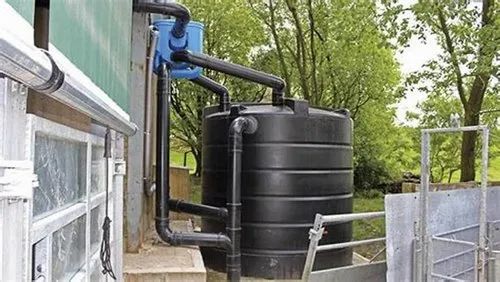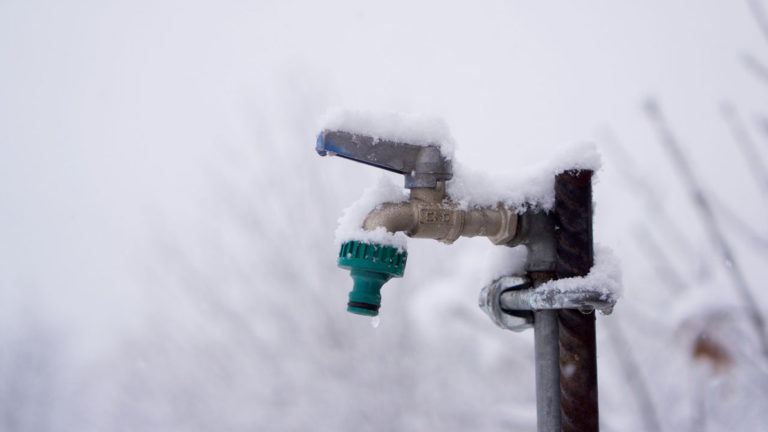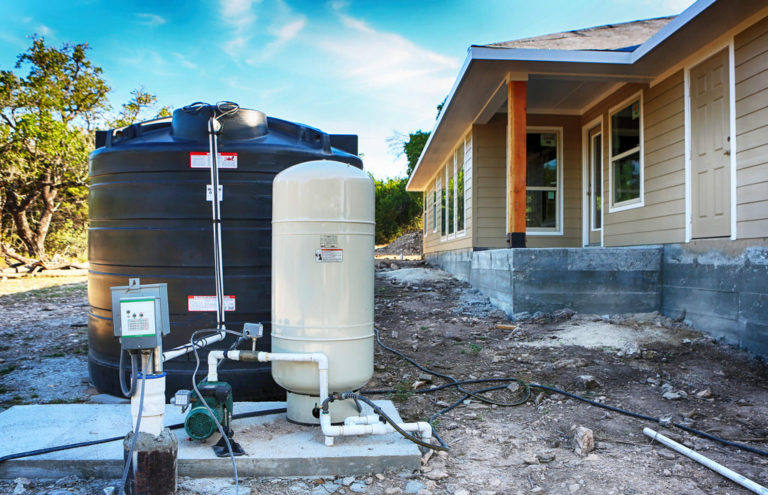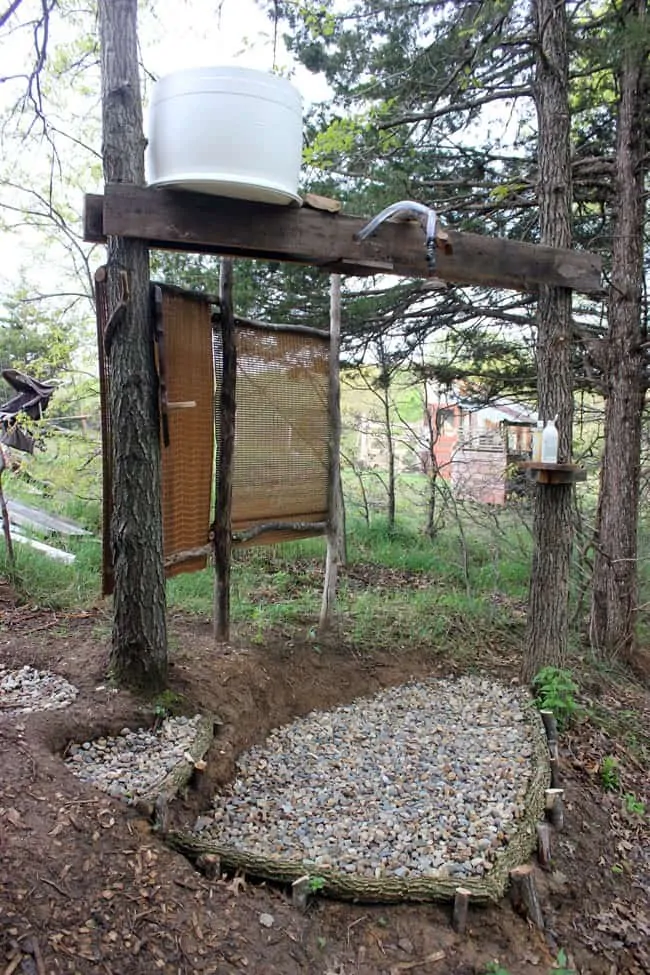Are you looking for ways to harness renewable energy and reduce your reliance on municipal water supplies?
Installing a rainwater harvesting system can be an excellent solution!
By capturing and storing rainfall, you can provide a sustainable source of water for irrigation, livestock drinking, and even domestic use.
Whether you’re building a new off-grid homestead or looking to retrofit your existing property, our step-by-step guide will walk you through the process of installing a rainwater harvesting system that meets your unique needs.
From assessing site conditions to selecting appropriate storage tanks and filtration systems, we’ll provide actionable tips and expert advice to ensure your project is successful and efficient.
Get ready to start harnessing nature’s abundant resource – the power of rainwater!
Determine Your Needs
Before installing a rainwater harvesting system, determine your needs and how much water you expect to use. Consider factors such as the size of your family, your water usage habits, and the climate and location of your homestead.
This involves assessing your water usage habits and the size of your family, as well as considering the climate and location of your homestead.
By doing so, you can accurately estimate the amount of water you expect to use and design a system that meets your needs.
For instance, if you have a larger family or use water more frequently, you may need a larger storage tank and more robust pumping system.
If you live in a dry or hot climate, you may require a more advanced filtration system to remove impurities and sediment from the rainwater.
By taking these factors into account, you can create a personalized rainwater harvesting system that meets your specific needs and provides a reliable source of clean water for your homestead.
Choose a Collection Area
Select a location for your rainwater collection area, such as a roof or a raised platform. Make sure the collection area is clean and free from debris.
When choosing a collection area for your rainwater harvesting system, it is important to select a location that is clean and free from debris.
This can include the roof of your home or a raised platform specifically designed for rainwater collection.
The collection area should be positioned to capture the maximum amount of rainfall, taking into account factors such as the slope and orientation of the roof or platform.
It is also important to ensure that the collection area is securely attached to the structure to prevent any leaks or overflows.
The collection area should be large enough to accommodate the desired amount of rainwater storage.
By selecting a suitable collection area, you can ensure that your rainwater harvesting system is effective and efficient in collecting and storing this valuable resource.
Install Gutters and Downspouts
Install gutters and downspouts on your roof to collect and direct rainwater into your storage tank. Make sure the gutters and downspouts are securely attached and pitched towards the collection area.
Installing gutters and downspouts is a important step in harvesting rainwater for your storage tank.
The gutters are designed to collect and channel roof runoff, while the downspouts direct the water into the collection area.
To ensure effective functioning, it is essential to securely attach the gutters and downspouts to your roof.
This can be achieved through the use of bracketry or specialized mounting systems.
It is important to ensure that the gutters and downspouts are pitched towards the collection area, so that water flows smoothly and efficiently into the tank.
Use a Storage Tank
Use a high-quality storage tank that is designed for rainwater harvesting. Consider factors such as size, material, and durability.
When it comes to rainwater harvesting, using a high-quality storage tank is important for maximizing the benefits of this eco-friendly practice.
A well-designed storage tank can help you collect and store rainwater for a variety of purposes, such as irrigating your garden, flushing toilets, and even washing clothes.
Look for a tank that is made of high-quality materials, such as food-grade plastic or stainless steel, to ensure that it is durable and free of harmful chemicals.
Consider the size of the tank, as it should be large enough to hold the amount of rainwater you need, but not so large that it becomes impractical or unaffordable.
By investing in a high-quality storage tank, you can enjoy a reliable and sustainable source of water for years to come.
Connect Pipes and Fittings
Connect pipes and fittings to transport the rainwater from the collection area to the storage tank. Use food-grade materials and ensure that all connections are secure and watertight.
Connecting pipes and fittings is a critical step in transporting rainwater from the collection area to the storage tank.
To ensure a reliable and safe system, it is essential to use food-grade materials that are safe for drinking water and meet local regulations.
Stainless steel, PVC, and HDPE are popular choices for rainwater harvesting systems.
When connecting pipes and fittings, it is important to ensure that all connections are secure and watertight.
This can be achieved by using proper connections, such as push-fit fittings or soldering, and by applying pipe dope or Teflon tape to create a watertight seal.
It is recommended to use flexible connectors to absorb any vibrations or movements that may occur during the transportation process.
To further ensure the integrity of the system, it is important to inspect all connections regularly and perform any necessary maintenance or repairs.
This includes checking for any signs of leaks or damage and replacing any components as needed.
Add a First Flush Device
Install a first flush device to remove debris and contaminants from the initial flow of water. This will help keep your storage tank clean and free from sediment.
Installing a first flush device is an effective way to ensure your rainwater harvesting system remains clean and free from sediment.
This device allows the initial flow of water to pass through, removing any debris and contaminants that may have accumulated on the roof or in the gutters.
By doing so, it prevents these impurities from entering the storage tank and contaminating the water within.
This is particularly important for systems that collect rainwater from roofs with poorly maintained or aged infrastructure, as these can be major sources of sediment and debris.
First flush devices can be installed both above and below ground, and can be designed to automatically flush the initial flow of water during the first few minutes of collection.
This means that the water that enters the storage tank is clean and free from contaminants, ready for use in your home or business.
First flush devices can be customized to suit your specific needs and preferences, such as the amount of water to be flushed or the frequency of flushing.
Overall, installing a first flush device is a simple yet effective solution to maintaining a clean and functional rainwater harvesting system.
Use a Pump (If Necessary)
If you need to pump the water from the storage tank to your home, choose a high-quality, low-maintenance pump. Consider factors such as power source, flow rate, and lifespan.
If you need to pump water from your storage tank to your home, it is essential to choose a high-quality, low-maintenance pump to ensure reliable and efficient performance.
When selecting a pump, consider the power source, flow rate, and lifespan.
A high-quality pump should be powered by a reliable source, such as an electrical outlet or solar panel.
Look for a pump with a high flow rate to meet your water needs, and choose a pump with a long lifespan to minimize maintenance and replacement costs.
Consider the type of pump you need, such as a centrifugal or submersible pump, and select one that is compatible with your storage tank and plumbing system.
Furthermore, ensure that the pump is easy to install and maintain, and comes with a comprehensive warranty and support.
By selecting a high-quality, low-maintenance pump, you can ensure reliable water supply to your home, minimize downtime, and enjoy peace of mind knowing that your pump will perform consistently over the years.
Install a Filtration System
Install a filtration system to remove impurities and improve the quality of the harvested rainwater. Consider factors such as membrane type, flow rate, and maintenance needs.
Installing a filtration system is a important step in harvesting and storing rainwater for a variety of uses.
The filtration system helps to remove impurities and improve the quality of the harvested rainwater, making it safe for consumption, irrigation, and other purposes.
When selecting a filtration system, it is important to consider factors such as membrane type, flow rate, and maintenance needs.
There are various types of membranes available, including granular activated carbon, reverse osmosis, and ultraviolet (UV) light.
Each type of membrane has its own strengths and weaknesses, and the choice of membrane will depend on the specific needs and requirements of the user.
For example, activated carbon membranes are effective at removing chlorine and other organic compounds, while reverse osmosis membranes are more effective at removing dissolved solids and impurities.
In addition to the type of membrane, the flow rate of the filtration system should also be considered.
The flow rate determines how quickly the water is filtered and how much water can be processed at one time.
A higher flow rate will be necessary for larger systems or for users with higher demands.
Maintenance needs should also be considered when selecting a filtration system.
Some systems may require more frequent cleaning or replacement of components, while others may be more low-maintenance.
By considering these factors, users can choose the best filtration system for their needs and ensure that their harvested rainwater is safe and clean.
Want More? Dive Deeper Here!
Hey there! If you’re the type who loves going down the rabbit hole of information (like we do), you’re in the right spot. We’ve pulled together some cool reads and resources that dive a bit deeper into the stuff we chat about on our site. Whether you’re just killing time or super into the topic, these picks might just be what you’re looking for. Happy reading!






